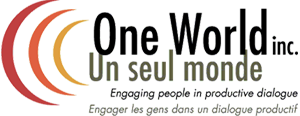Putting Relationships First – A Different Approach to Designing “People Services”

“People services” are the types of program such as health, education and social services that essentially involve one group of people (providers) providing a range of services to another group of people (variously called clients, consumers, patients or students, depending on the context). The planning for these programs has been dominated, over the past 50 years or so, by the desire to create systems intended to standardize the types and quality of the services provided, in the hope of creating similar outcomes for the clients. In this process, it has been generally assumed that any professional that possesses the appropriate qualifications can provide the required service. What has often been overlooked is the actual relationship that gets created between a provider and a client.
What happens if, instead of creating a “machine” in which providers are interchangeable “cogs”, you place a priority on creating sustained relationships between providers and clients? Would clients use services differently? Would the outcomes for clients be different? A couple of examples provide interesting insights into this question.
Giving Patients and Caregivers a voice – the PATH Project
The mantra of health care reform has been to provide “the right service at the right time using the right professional.” While this idea has been very important, the way in which it has been implemented in many places means that some patients get seen by a virtual parade of different providers. This problem is particularly acute for frequent users of the health care system – for example, seniors with chronic conditions – who often make the transition between home, hospital, and nursing home. These people (and the family members or caregivers who support them) may see a range of primary care providers, home care nurses, specialists, physiotherapists, occupational therapists, social service providers and others. Managing all these different relationships can be confusing, and important information can get lost between players. And the voice that often does not get heard is the patient’s.
The PATH project, being carried out in Northumberland County in southern Ontario, is looking to tap into the experiences of patients and caregivers . This initiative, funded through The Change Foundation – a think tank dedicated to funding innovative practices to address challenges in Ontario’s health system – engages seniors and caregivers in a process of “experience-based co-design”. Patients and caregivers are able to tell their stories about their experiences navigating the health care system – and what contributed to positive and negative experiences. They also participate in working groups together with health care providers to try to design solutions to these challenges together. One World Inc. is working with a number of other partners to evaluate the experience and to identify the lessons that can be learned in applying this experience in other settings.
Although it is still early days in the process, the patients and caregivers have been extremely excited by being able to tell their stories, and by having their experiences taken seriously by providers. They are also very pleased to have the opportunity to sit as equals with the providers, as experts in their own experience. A number of interesting strategies are being investigated, some using technology and some using volunteer “navigators” to help patients and caregivers to make smoother transitions through the system.
Relationships transform the use of Health Services in Alaska’s “Nuka System”
If the PATH project is an example of how to retrofit a health system to provide for better continuity of care and better health outcomes, the Nuka System of Care is a case of how a system can be created from the ground up, based on a different set of principles.
This revolutionary system was created by the Southcentral Foundation to serve the Native people of Alaska in 1998 . It was part of a move from a bureaucratic, centrally controlled system run from Washington DC to a system owned and run by the people served by the system (called “customer-owners”). There are many innovative aspects in the Nuka System, but one of its main features is that the system places a primary focus on building and maintaining relationships. Gottlieb describes this as follows:
“(O)ne of the chief responsibilities of each provider is to work with customer-owners to establish trusting, accountable and long-term relationships. Relationships provide a better understanding of the context in which a customer lives. As a result, providers are in a better position to understand symptoms, answer questions, have meaningful conversations about risks and benefits, and work with each customer to make better health decisions.”
But, does a health care system built around relationships make a difference? Evaluations have shown that Nuka Health System “customer-owners” have better access to care, lower rates of hospitalization and lower rates of Emergency Room use than under the previous system. Other benefits include a higher level of customer satisfaction and a higher level of employee satisfaction and lower rates of turnover.
The success of the relation-based Nuka experience provides much food for thought. The frustrations we have been hearing from seniors and caregivers through the PATH initiative strongly suggest we need to look for strategies that value and support long-term, sustainable relationships between health care providers and clients, especially for frequent users of the system. The value of relationships is also incredibly important in other “people services” that require trust, confidentiality and a deep understanding of the client and the context in which he/she is living. How could this model be applied in other “people services”? What does it take to support such a model?
Building relationships requires organizational and personal commitment. It means changes to the way that services are provided and accessed, and the way that staff are organized. It is a significant shift in the way our systems have provided “people services”, but the outcomes (better outcomes for the client, more efficient use of services, higher levels of client and staff satisfaction) may well be worth the investment.
